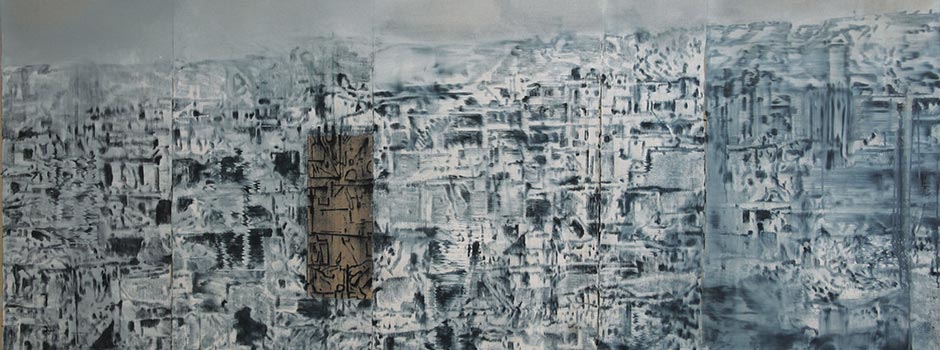
Exhibition at Sabrina Amrani (10 Sept – 14 Nov 2020) Señal de Abandono, the solo exhibition by Jorge Tacla
Sep 06, 2020 INSPO, Exhibition

Like much of Tacla’s work, his paintings represent a space of social rupture. These works situate themselves in the joints of a new architecture that arises in the wake of catastrophe, natural or man-made. Tacla perceives the devastation that results from such events as an opportunity to investigate structural systems that would otherwise remain unseen. To signify such unsettled worlds, he uses pictorial languages that are obsessive: sometimes repeating the images, sometimes repeating the same gesture in the same space many times until the visual register is analogous to the trauma that prompts it. Tacla illuminates the variability of identity for victim and aggressor and the complexity of the assessment of guilt. These critical issues, and their situation in the larger, collective human experience, represent theoretical inquiries of Tacla's work.
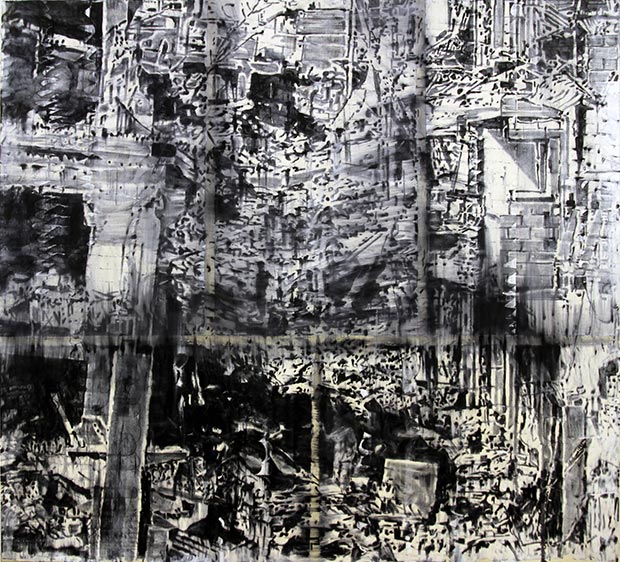 Jorge Tacla, Identidad Oculta 069, 2014. Oil and cold wax on canvas. 144.78 x 160.02 cm. Courtesy of the artist and Sabrina Amrani
Jorge Tacla, Identidad Oculta 069, 2014. Oil and cold wax on canvas. 144.78 x 160.02 cm. Courtesy of the artist and Sabrina Amrani
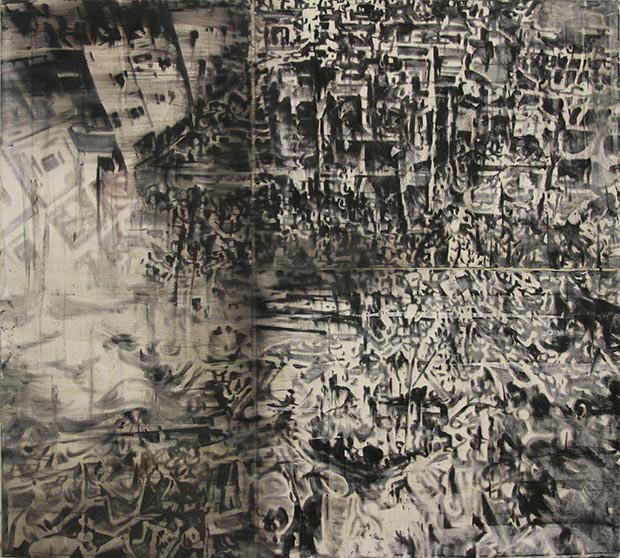 Jorge Tacla, Identidad Oculta 071, 2014. Oil and cold wax on canvas. 144.78 x 160.02 cm. Courtesy of the artist and Sabrina Amrani
Jorge Tacla, Identidad Oculta 071, 2014. Oil and cold wax on canvas. 144.78 x 160.02 cm. Courtesy of the artist and Sabrina Amrani
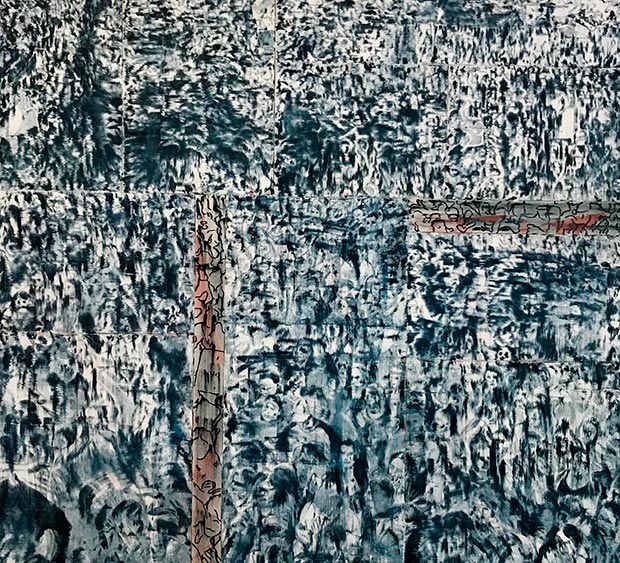 Jorge Tacla, Octubre 25, 2019. Oil and cold wax on canvas. 158 x 208 cm. Courtesy of the artist and Sabrina Amrani
Jorge Tacla, Octubre 25, 2019. Oil and cold wax on canvas. 158 x 208 cm. Courtesy of the artist and Sabrina Amrani
Faced with this selection of Tacla's work, the viewer could experience the same fascination that overwhelms when in front of an abandoned building, a forgotten civilization, the image of what was inhabited, full of life and is now just History. But it is a naked History, already devoid of the humanity that created it.
From the human perspective, paintings show the brutal desolation that follows the conflict. Señal de Abandono seems to replicate a moment in which time has been suspended in a devastating reality. And if there is a future to be seen, it is not very optimistic. When the Oklahoma City Federal building was attacked in 1995, images came all together to the artist's mind: the earthquakes in Chile; the bombing of La Moneda in Santiago; the wars in the Middle East; the Lebanese civil war; the occupation of Beirut; the massacres of Palestine in 1982. “At that moment, the idea that this is just the beginning came also to me immediately, this is what we will be seeing more and more from now on†he predicted. And so it was, perhaps not because Tacla’s skills as a fortune teller, but because it is part of a dark side of human nature and a History that does nothing but repeat itself: later we saw the Twin Towers fall, attacks in Europe, more desolation in the Middle East.
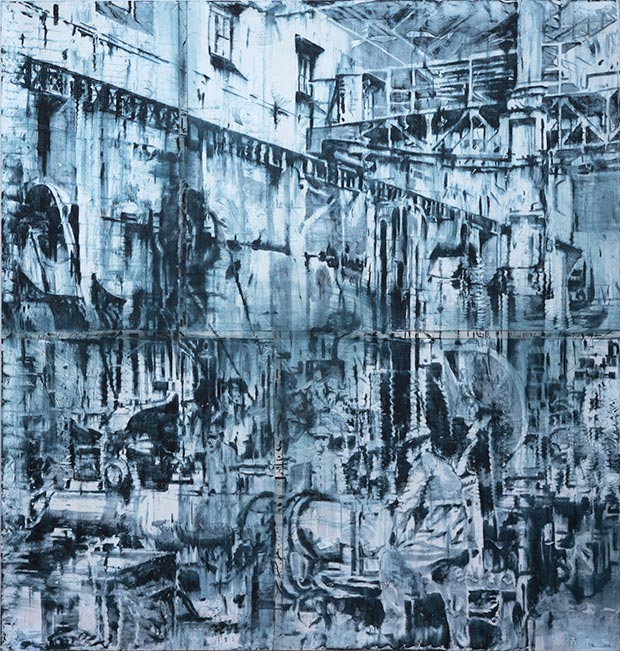 Jorge Tacla, Identidad Oculta 111, 2015. Oil and cold wax on canvas. 203.2 x 203.2 cm. Courtesy of the artist and Sabrina Amrani
Jorge Tacla, Identidad Oculta 111, 2015. Oil and cold wax on canvas. 203.2 x 203.2 cm. Courtesy of the artist and Sabrina Amrani
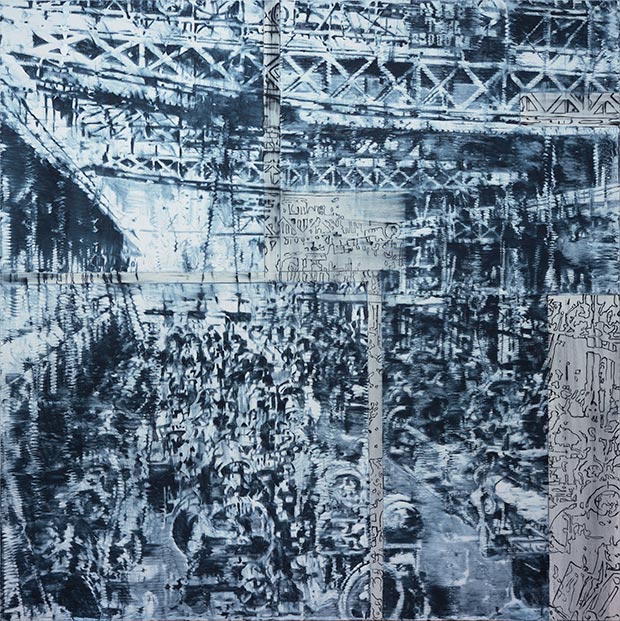 Jorge Tacla, Identidad Oculta 112, 2015. Oil and cold wax on canvas. 203.2 x 203.2 cm. Courtesy of the artist and Sabrina Amrani
Jorge Tacla, Identidad Oculta 112, 2015. Oil and cold wax on canvas. 203.2 x 203.2 cm. Courtesy of the artist and Sabrina Amrani
Tacla's work encloses the magnetism of a frozen moment within History. Or perhaps post-History, because it represents the moments of a recently devastated civilization. Something inside the spectator plays with the feelings of nostalgia and the seduction of the devastated, of a spell of extinction and horror, "the sublime of the images, without ceasing to see their horror," sums up the artist. Tacla brings with his paintings the same affliction that seized him after seeing the effects of the devastating earthquake in Chile in 1985: "It feels like a kind - which is the opposite to gravity? - of vertigo," he explains in an interview with Laurence Weschler. Not surprisingly, Tacla has been defined as the painter of destruction.
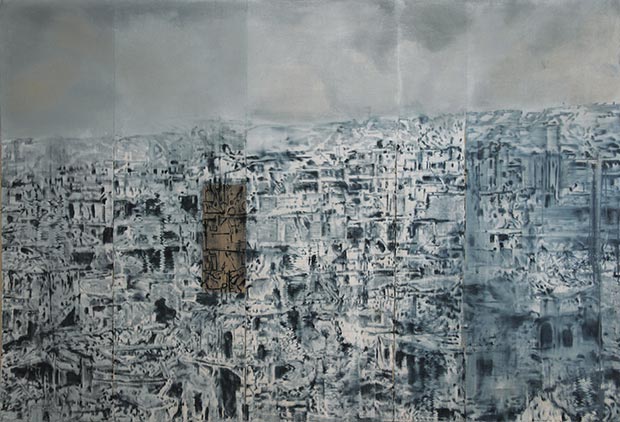 Jorge Tacla, Señal de abandono 014, 2017. Oil and cold wax on canvas. 124.5 x 180 cm. Courtesy of the artist and Sabrina Amrani
Jorge Tacla, Señal de abandono 014, 2017. Oil and cold wax on canvas. 124.5 x 180 cm. Courtesy of the artist and Sabrina Amrani
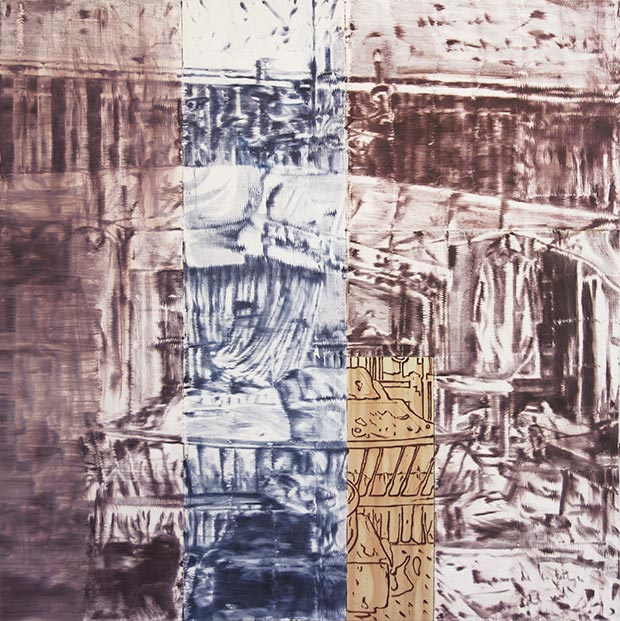 Jorge Tacla, Señal de abandono 29, 2018. Oil and cold wax on canvas. 152.5 x 152.5 cm. Courtesy of the artist and Sabrina Amrani
Jorge Tacla, Señal de abandono 29, 2018. Oil and cold wax on canvas. 152.5 x 152.5 cm. Courtesy of the artist and Sabrina Amrani
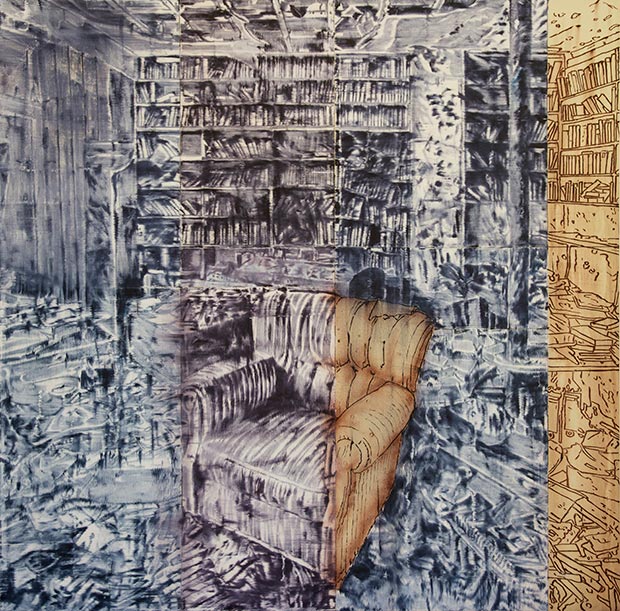 Jorge Tacla, Señal de abandono 30, 2018. Oil and cold wax on canvas. 203.2 x 203.2 cm. Courtesy of the artist and Sabrina Amrani
Jorge Tacla, Señal de abandono 30, 2018. Oil and cold wax on canvas. 203.2 x 203.2 cm. Courtesy of the artist and Sabrina Amrani
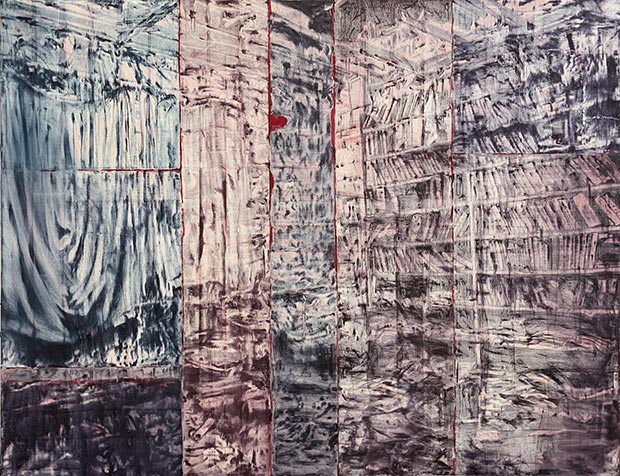 Jorge Tacla, Señal de Abandono 39, 2019. Oil and cold wax on canvas. 157.48 x 208,28 cm. Courtesy of the artist and Sabrina Amrani
Jorge Tacla, Señal de Abandono 39, 2019. Oil and cold wax on canvas. 157.48 x 208,28 cm. Courtesy of the artist and Sabrina Amrani
In his work, the artist connects the points of his personal history with traces of humanity’s history. His grandparents emigrated from Palestine and Syria, as a consequence of the fall of the Ottoman Empire. The artist's youth was marked by turbulent moment in the history of Chile, with the rise of communism and the coup d'état of General Pinochet. Tacla saw the effects of La Moneda’s bombardment and when the conservatory where he studied music closed, he ended up studying painting and emigrated to New York. The artist probably began to form those images of devastation, evoking, in turn, a memory of his roots: “my previous history could have made me more receptive to future implications â€, explains the artist. But Tacla sees the ruins, the demolished facades, the shaky structures, as a symbol: "Ruined buildings also contain, for example, intimate scenes, since individual bodies can also be destroyed." Tacla tries to open a space for reflection, to slow down and perhaps to establish a dialogue about the instability of the world: "everything is constantly moving and destroying itself," he clarifies. But he is also critical as the world "feels as if we were always at war," he confesses. The artist presents the exterior of abandoned ruins as well as the interior, as we can see in Señal de Abandono.
Throughout his career, Tacla has been awarded numerous grants and fellowships. Most recently, Tacla completed a residency at the Rockefeller Foundation Bellagio Center in Bellagio, Italy (2013). Notable awards include New York Foundation for the Arts (1987, 1991); the Eco Art Award, Rio de Janeiro, Brazil (1992); and the John Simon Guggenheim Memorial Foundation (1988), among others. Tacla lives and works in New York City and Santiago, Chile.
Comments
Add a comment